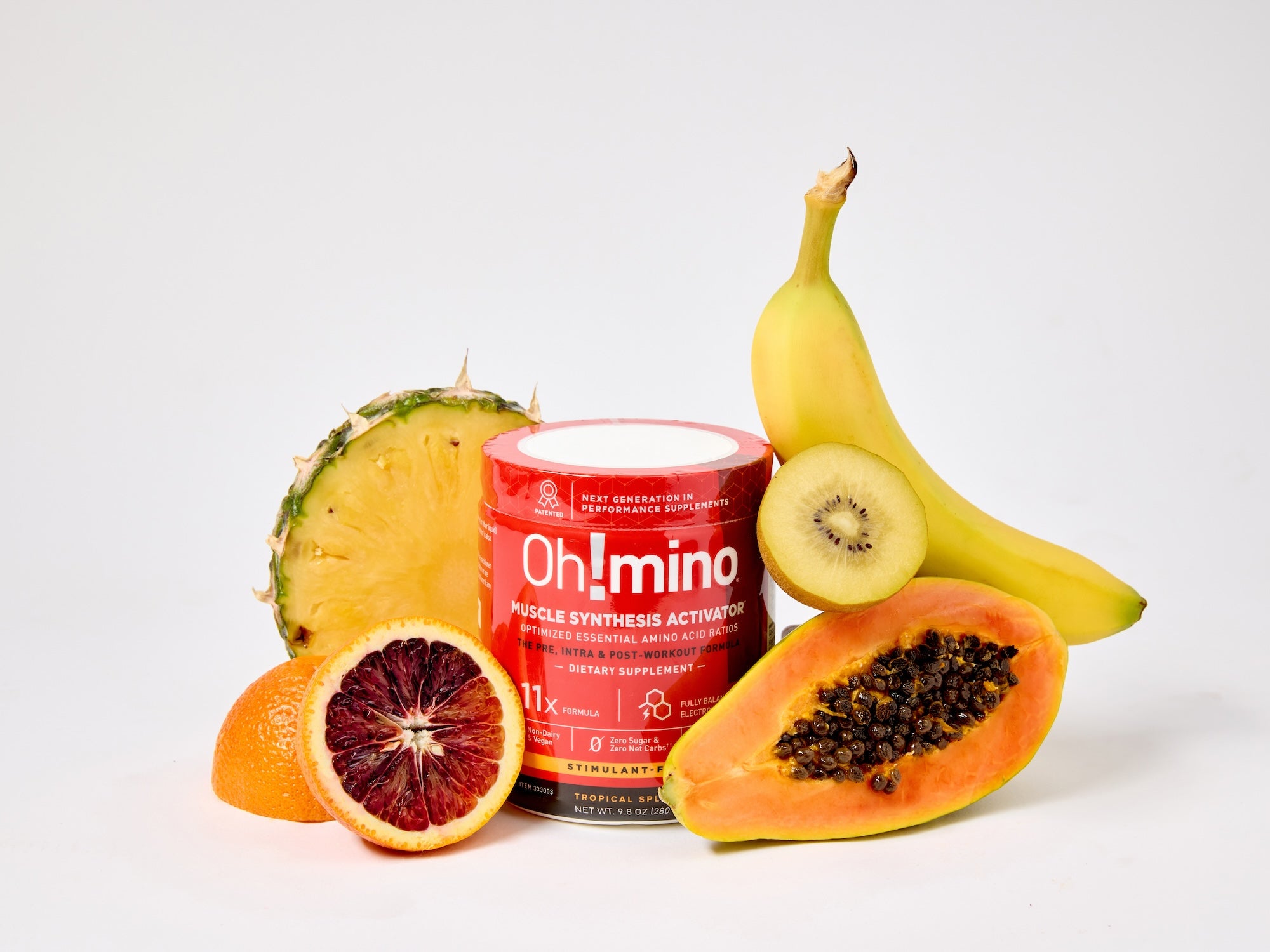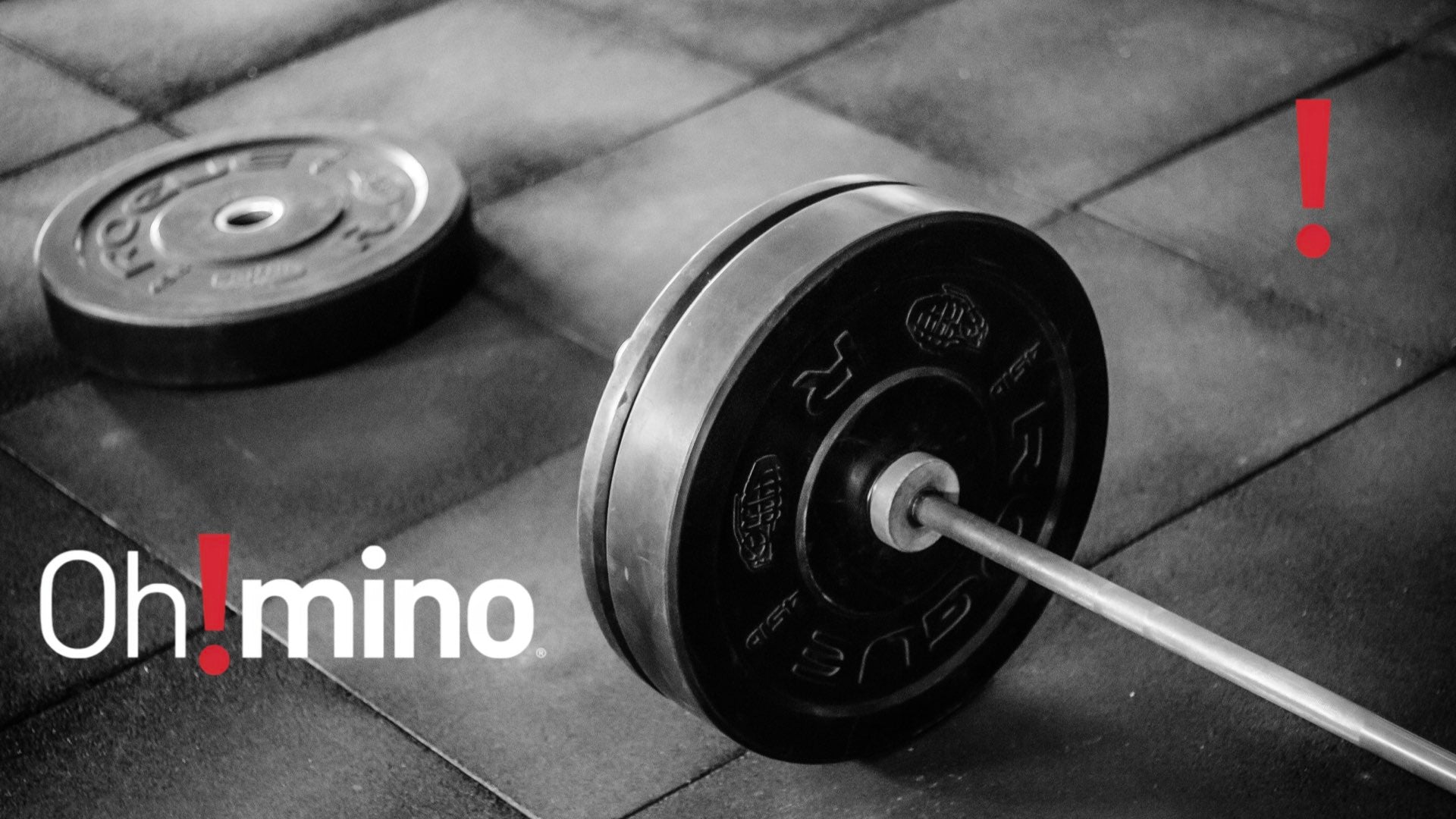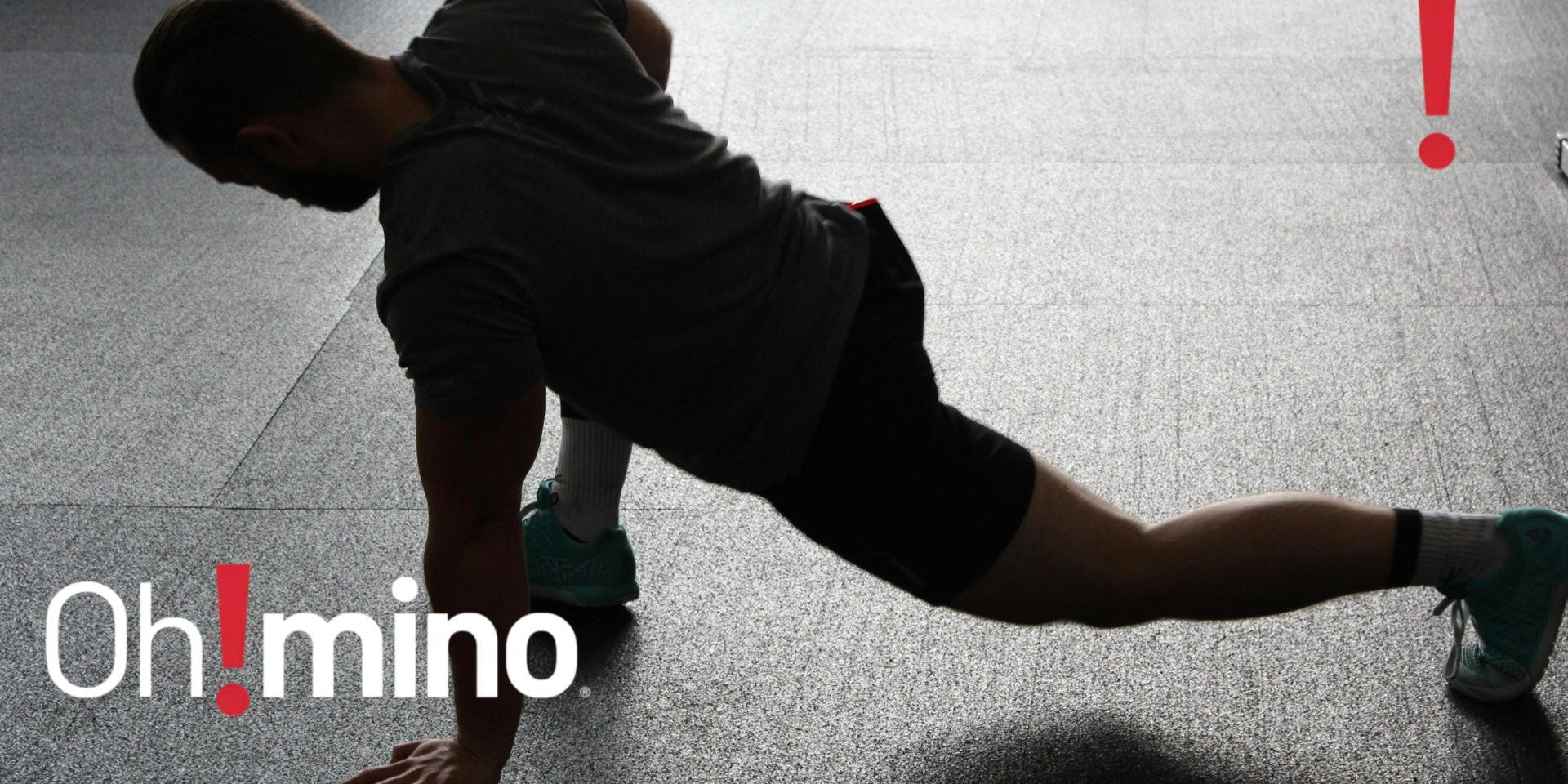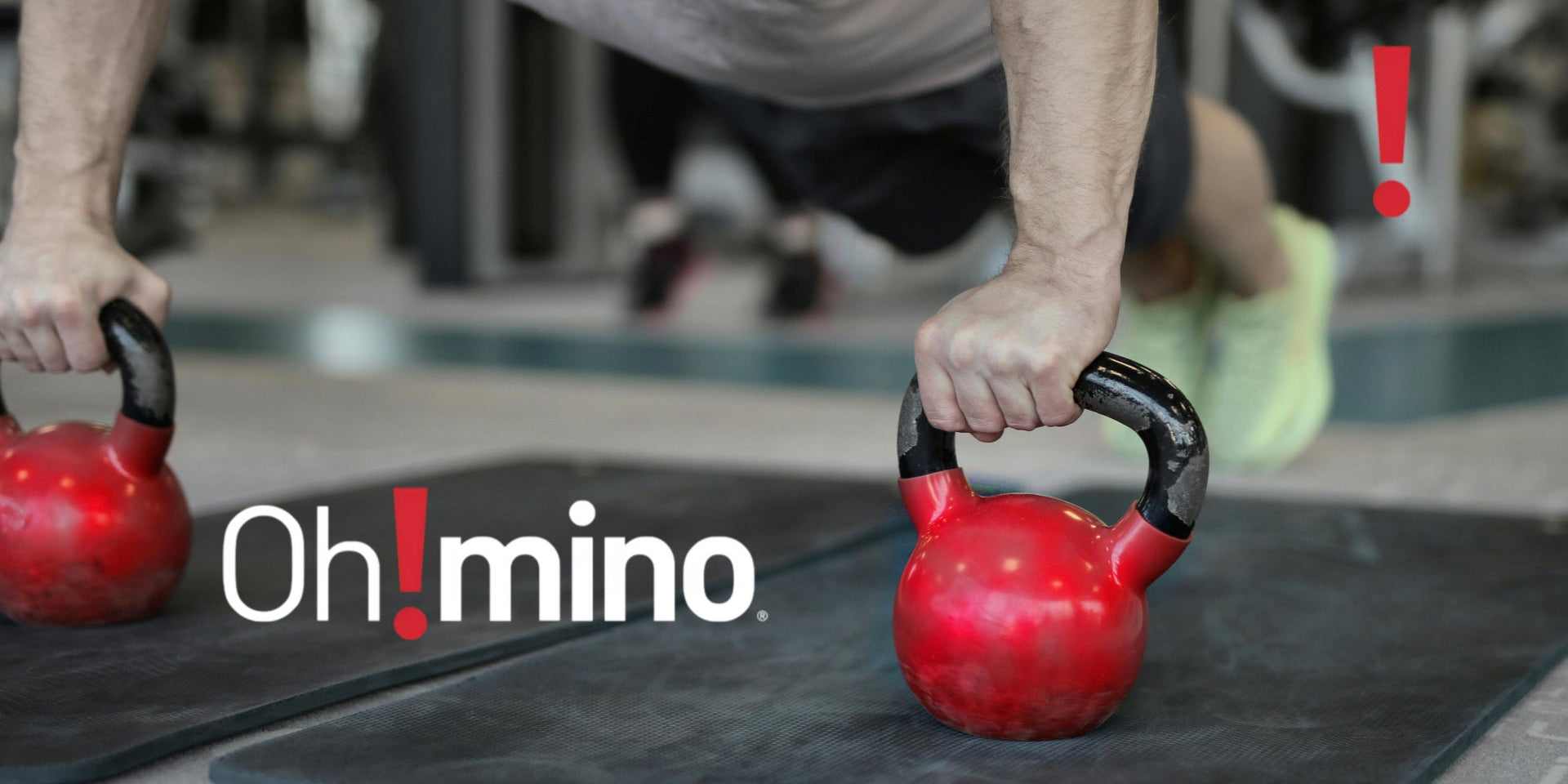Key Takeaways
-
Periodization structures your training into macro, meso, and micro cycles to balance workload, recovery, and long-term results.
-
It’s a smarter way to train by strategically varying intensity and volume, helping you avoid burnout and plateaus.
-
Different models like linear, undulating, and block periodization allow you to customize your plan based on your goals and training level.
-
Implementing periodization effectively means setting clear goals, breaking them into focused phases, and including deload weeks for recovery.
-
Oh!mino® enhances every phase of periodized training with faster muscle recovery, clean energy, hydration support, and flexible use before, during, or after workouts.
What Is Periodization?
Periodization is the practice of breaking your training plan into specific cycles, each with its own focus, intensity, and duration.
By dividing your training into phases, you can manage fatigue, optimize recovery, and ensure consistent progress over time.
Periodization is widely used in professional athletics, but its principles apply to everyone, from beginners to advanced athletes.
The basic structure of periodization includes:
-
Macrocycles – Long-term cycles, typically spanning several months to a year, setting the overarching goals of your training.
-
Mesocycles – Intermediate cycles within a macrocycle, usually lasting 4–8 weeks, focusing on specific training objectives.
-
Microcycles – Shorter cycles within a mesocycle, typically a week long, outlining the day-to-day training plan.
Each of these cycles varies in intensity, volume, and focus, allowing you to systematically overload and then rest the body for optimal gains.
The Aha Moment: Periodization as a Blueprint for Success
Here’s where periodization shines: Instead of training with the same intensity every week, periodization gives you a structured approach that balances hard work with strategic rest.
It’s like giving your body a chance to reload so you can push even harder in the next phase. This strategic cycling keeps your body from adapting to a routine, preventing plateaus and keeping gains coming.
|
Oh!mino©: Elevate Your Performance. Accelerate Your Recovery. Science-Backed Superiority for Every Fitness Journey Power Your Goals with Proven Results:
The Oh!mino® Advantage: ✓ Patented formula that’s 11x more effective than protein, 20x more effective than BCAAs Choose Your Perfect Formula: Available in refreshing Tropical Slash or Berry Blast flavors, with stimulant-free or caffeinated options. Prefer capsules? We've got you covered with the same powerful formula. Take before, during, or after training—one solution for your entire workout. |
Types of Periodization Models
Periodization isn’t one-size-fits-all. Different types of periodization models cater to various fitness goals and individual preferences. The most common types include:

Every training cycle has a purpose, structure brings long-term results.
1. Linear Periodization
In linear periodization, the intensity of your training gradually increases while the volume decreases. This model is ideal for those focusing on building maximum strength or muscle size over a specific period.
Example:
-
Week 1–4: High volume, low intensity (12–15 reps per set)
-
Week 5–8: Moderate volume, moderate intensity (8–10 reps per set)
-
Week 9–12: Low volume, high intensity (4–6 reps per set)
Linear periodization is effective for beginners or those who prefer a straightforward approach to training progression.
2. Undulating Periodization
Undulating periodization varies the intensity and volume within each cycle, which can be weekly or even daily. This approach keeps your muscles guessing and helps avoid adaptation and stagnation.
Example:
-
Monday: Low volume, high intensity (4–6 reps)
-
Wednesday: High volume, low intensity (12–15 reps)
-
Friday: Moderate volume, moderate intensity (8–10 reps)
Undulating periodization is ideal for intermediate and advanced lifters looking to continuously challenge their muscles with varied stimuli.
3. Block Periodization
Block periodization breaks training into specific blocks, each focusing on one key attribute such as hypertrophy, strength, or endurance.
This model is beneficial for athletes or individuals with specific performance goals, as each block builds upon the previous one to peak at a particular event or time.
Example:
-
Block 1: Hypertrophy phase (focus on building muscle)
-
Block 2: Strength phase (increase weight, reduce reps)
-
Block 3: Power phase (explosive exercises with moderate weight)
Block periodization is commonly used by athletes preparing for a competition or event, as it allows for targeted focus in each phase.
How to Implement Periodization for Maximum Gains
The beauty of periodization is that you don’t need to be a professional athlete to benefit from it. Here’s how to create a periodized training plan that will help you achieve maximum results.
Step 1: Set Your Long-Term Goals (Macrocycle)
Start by setting an overarching goal for your training. Are you aiming to build muscle, improve endurance, or increase strength? Your macrocycle should span several months to a year and be tailored toward achieving this primary goal.
Example Goal: Increase total body strength by 20% within six months.
Step 2: Define Your Mesocycles
Once you have your macrocycle goal, break it down into smaller, focused mesocycles that address specific aspects of your training. Each mesocycle can last 4–8 weeks and should have a unique focus that contributes to your overall goal.
For a strength-focused macrocycle, your mesocycles could be:
-
Mesocycle 1: Hypertrophy (build muscle base)
-
Mesocycle 2: Max Strength (increase lifting capacity)
-
Mesocycle 3: Power (focus on explosive movements)

Athletes use periodization to time their peak performance for competitions or events.
Step 3: Plan Your Weekly Training (Microcycle)
Each mesocycle is then broken down into weekly microcycles. This is where you plan your specific workouts, including exercise selection, sets, reps, and rest periods. Ensure that each microcycle aligns with the focus of the mesocycle it’s part of.
For example, during the hypertrophy mesocycle, you could plan:
-
Week 1–2: High volume, moderate weight, focus on progressive overload.
-
Week 3–4: Increase intensity with fewer reps, slightly higher weight.
Step 4: Incorporate Deload Weeks
One essential component of periodization that many overlook is the deload week, a week of reduced intensity and volume to allow the body to fully recover. Deload weeks are critical for preventing burnout, managing fatigue, and ensuring your body is ready to handle the next phase of training.
For instance:
-
Every 4th or 5th week, reduce your workout intensity by 40–50%.
-
Focus on light, functional movements, stretching, and mobility.
Avoiding Plateaus with Periodization
One of the biggest advantages of periodization is its ability to help you avoid plateaus.
By changing the intensity, volume, and focus of your workouts periodically, you prevent your body from adapting to a routine. The continual shift in stimulus keeps your muscles engaged and constantly working to adapt to new challenges.
For example, if you’ve been doing high-volume hypertrophy training, transitioning to a strength-focused mesocycle shocks your muscles with heavier weights, forcing new adaptations.
When you cycle back to hypertrophy, you’ll often find that you’re able to handle more weight, resulting in better gains.
Common Periodization Mistakes to Avoid
While periodization is highly effective, there are a few common pitfalls to watch out for:
-
Skipping Deload Weeks: Many people feel like deload weeks are a waste of time, but they’re essential for long-term progress.
-
Poor Planning: Without a clear goal or structured plan, periodization loses its effectiveness. Each cycle should have a distinct focus.
-
Ignoring Recovery: Periodization requires intense work, so be sure to prioritize recovery and nutrition, including sleep and post-workout nutrition.
How Oh!mino Enhances Your Periodized Training
With the increased intensity and varied demands of periodization, it’s essential to support your body with proper nutrition and recovery aids. Oh!mino® Muscle Synthesis Activator is designed to complement periodized training, offering targeted benefits to enhance performance and maximize gains.

Fuel every training phase with Oh!mino®, supporting strength, endurance, and recovery.
Faster Muscle Recovery
Oh!mino’s complete patented formula includes all nine essential amino acids, including the crucial BCAAs, in an optimized ratio proven to stimulate muscle protein synthesis up to 11x more effectively than whey protein. It accelerates recovery by up to 373%, making it a vital tool for bouncing back after intense training phases.
Sustained, Jitter-Free Energy
If you’re in a high-volume hypertrophy block or focusing on maximum strength, Oh!mino fuels your sessions with clean, smooth energy. Choose from stimulant-free or caffeinated versions based on your personal needs and tolerance.
Hydration Support for Every Phase
Each serving includes a fully balanced blend of electrolytes, sodium, potassium, and magnesium, to keep your muscles hydrated, reduce cramping, and maintain optimal performance through long or intense workouts.
Clean and Efficient Fuel
With just 15 calories per serving and absolutely no sugar, carbs, dairy, gluten, or artificial fillers, Oh!mino supports your goals without compromising your diet. It’s vegan, non-GMO, and designed to integrate seamlessly into any routine.
Training Flexibility, Your Way
Whether taken before, during, or after workouts, Oh!mino adapts to your schedule and needs. Available in both powder and capsule formats, it’s a convenient all-in-one supplement that simplifies your regimen and maximizes your results, helping you gain strength, build muscle, and recover faster.
Frequently Asked Questions (FAQs)
Why should I use periodization instead of a regular workout plan?
Unlike static programs, periodization prevents plateaus by cycling intensity and volume, allowing your body to continuously adapt and improve strength, size, and endurance.
Can beginners use periodization, or is it just for athletes?
Periodization is for everyone. Beginners benefit by learning structured progression, while advanced athletes use it to peak at specific times and avoid burnout.
How long should each cycle last in a periodized plan?
Macrocycles last several months to a year; mesocycles typically last 4–8 weeks; microcycles cover your week-to-week training plans.
How do I know which periodization model is right for me?
It depends on your goals and training experience. Linear works great for beginners, undulating keeps things moderate for intermediates, and block is ideal for advanced or competitive athletes.
Where does Oh!mino® fit into a periodized training plan?
Oh!mino® Muscle Synthesis Activator supports every phase of periodized training, boosting energy pre-workout, sustaining performance during sessions, and accelerating recovery afterward with its patented EAA formula.





